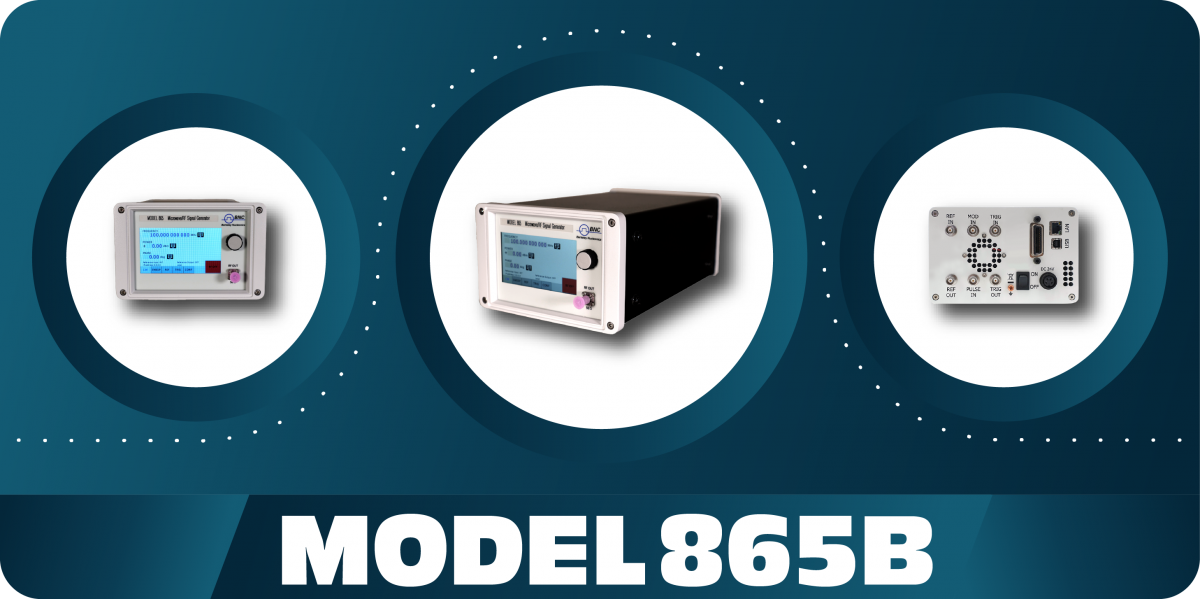June 14, 2023 - Ferromagnetic Resonance Research
Advancing Ferromagnetic Resonance Research and Development through Berkeley Nucleonics RF Signal Generators
Ferromagnetic Resonance (FMR) research plays a crucial role in unlocking the potential of ferromagnetic materials. This knowledge fuels advancements in fields like electronics, materials science, and medical technology. An essential tool for researchers in FMR investigations is the RF signal generator. In this technical blog post, we will explore the significance of RF signal generators in Ferromagnetic Resonance research and development, highlighting their vital functionalities. The University of California, San Diego utilizes the Model 865B ultra-low noise signals from 100kHz to 40GHz, provided by Berkeley Nucleonics, to conduct their experiments.

Understanding RF Signal Generators
RF signal generators are electronic devices designed to generate precise radio frequency (RF) signals with varying frequencies, amplitudes, and modulation schemes. These versatile devices can produce a wide range of signals required for diverse research and development applications.
The Role of RF Signal Generators in FMR Research
FMR research necessitates precise control over the frequency and power of the magnetic field applied to ferromagnetic materials. RF signal generators serve as invaluable tools in this context by providing the required RF signals to drive the FMR phenomenon. They offer several benefits:
a. Frequency Control: RF signal generators enable researchers to accurately set the frequency of the radio waves used in FMR experiments. This control allows them to match the resonance frequency of the material under study, optimizing data collection and analysis.
b. Amplitude Control: By adjusting the power output of the RF signal generator, researchers can regulate the strength of the magnetic field applied to the ferromagnetic material. This control is crucial for studying the material's behavior under different magnetic field strengths.
c. Modulation Capabilities: Some RF signal generators offer advanced modulation features, including amplitude modulation (AM) and frequency modulation (FM). These capabilities allow researchers to explore the response of ferromagnetic materials to modulated RF signals, opening up new avenues for investigating material properties.
Experimental Techniques Utilizing RF Signal Generators in FMR Research
RF signal generators find applications in various experimental techniques employed in FMR research and development. Notable techniques include:
a. Continuous Wave FMR: In this technique, the RF signal generator provides a continuous RF signal at the desired frequency to induce FMR in the material under investigation. The resulting resonance signal is then measured and analyzed to extract valuable information about the material's properties.
b. Pulsed FMR: Here, the RF signal generator generates pulsed RF signals with controlled timing and duration. This technique allows researchers to study dynamic effects and transient behavior in ferromagnetic materials.
c. Frequency Sweep FMR: RF signal generators can be programmed to sweep the frequency of the RF signal over a specified range. This technique helps identify the resonant frequency of the material, providing insights into its magnetic properties.
Advancements in RF Signal Generator Technology
As FMR research progresses, RF signal generator technology also advances. Modern RF signal generators offer enhanced frequency accuracy, improved power control, and expanded modulation capabilities. These advancements empower researchers to conduct more precise and sophisticated experiments, leading to deeper insights into the behavior of ferromagnetic materials.

Model 865B Signal Generator
RF signal generators are indispensable tools in Ferromagnetic Resonance research and development. Their ability to provide precise control over the frequency, amplitude, and modulation of RF signals facilitates accurate investigation of ferromagnetic materials. By leveraging the capabilities of RF signal generators, researchers can gain a better understanding of material properties and drive advancements in areas such as electronics, materials science, and medical technology. For more information about Model 865B, please visit the Berkeley Nucleonics product page at this link.
